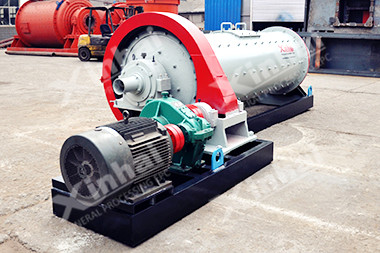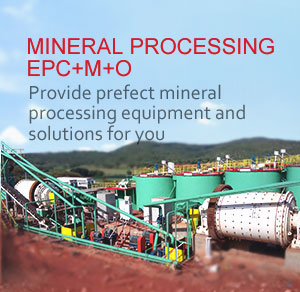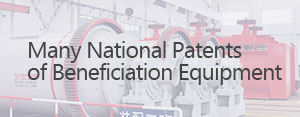- Home
- About
-
Mineral Processing EPC+M+O

Providing optimized solutions for your mine, one-stop service for mineral processing plant!
View details -
Product
- Grinding
- Classifying
Grinding & Classifying
- Flotation
- Gravity Separation Equipment
- Magnetic Equipment
- Gold Extraction Equipment
- Washing Equipment
Separating Process
- Thickening
- Dewatering Machine
Thickening & Dewatering
- Accessories
- Auxiliary Product
Consumables

Xinhai mineral processing equipment mainly include: grinding equipment, flotation equipment, dewatering equipment, magnetic separation equipment, and so on. Some of the equipment is Xinhai independent research and development, and has been awarded national patent. View details
-
Solutions
- Gold Tailings
- Tailings
Tailings

Gold CIP Production Line adsorbs gold from cyaniding pulp by active carbon including 7 steps: leaching pulp preparation, cyaniding leaching, carbon adsorption, gold loaded carbon desorption, pregnant solution electrodeposit, carbon acid regeneration, leaching pulp. View details
- Case
-
News
- Contact
How Hard Rock Lithium Processing Works: Mine to Market
2025-04-23 XinHai Views (15)Lithium, our "white gold" that drives our electric future, is more coveted than ever before. While production of lithium by brine mines receives a high level of public attention, hard rock mining continues to be the dominant source of lithium, particularly in leading producer centers like Australia. It is vital for the stakeholders of the technology and energy sectors to understand how the hard rock lithium processing is conducted – from the first extraction of the mine to its final market form. This whole guide will address the technicalities of the process, highlighting its most crucial steps and technologies involved.

Expertise: Understanding the Hard Rock Lithium Advantage
Hard rock lithium deposits, bearing minerals like spodumene and lepidolite, carry more lithium than certain sources of brines.
Natural availability translates to improved extraction methods when optimized correctly. Australia, for example, has built their hard rock lithium processing over decades and established robust infrastructure and cleaning technologies that deliver a secured supply to the world market. This adds up experience and operating knowledge that have a significant effect on the reliability of hard rock lithium as a top resource.
Experience: A Step-by-Step Process from Ore to Concentrate
Hard rock lithium processing from the ground to a usable state is a highly choreographed series of operations, each of which is important for optimal lithium recovery and waste reduction:
1. Crushing and Mining: Extraction of the Lithium-Rich Ore
The procedure begins with the exploration and recovery of lithium bearing pegmatite mineralization using open-pit or sub-surface mining methods. The raw ore in massive form is subsequently subjected to primary breaking through heavy jaw breakers in order to reduce it to appropriate sizes for subsequent treatment.
2. Secondary Crushing and Grinding: Optimal Particle Size
The roughly broken ore is then broken down further to a smaller size by secondary crushers, typically cone crushers, to a smaller particle.
This crushed material is screened on vibrating screens for uniformity. The oversized material is recycled to be crushed again. The screened material now proceeds to grinding, usually wet ball mills. Preparation to the correct grind fineness (usually less than 0.15mm) is a critical parameter in the efficiency of the following process of flotation.
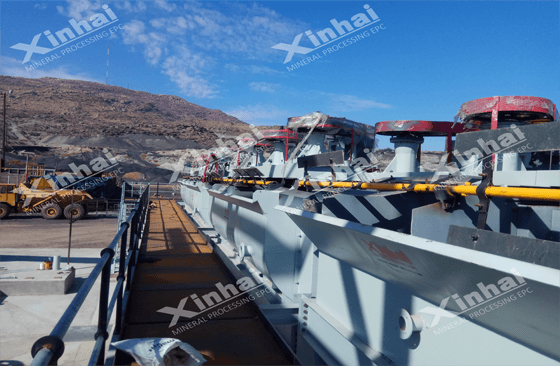
3. Beneficiation: Lithium Minerals Purification from Gangue
This process is meant for the concentration of lithium minerals and removal of unwanted gangue constituents like silica, alumina, and iron minerals. The most employed process of hard rock lithium beneficiation is flotation:
Flotation: It is based on differential surface properties of the minerals. Milled ore is mixed with water and some chemical reagents in flotation cells. The reagents make the surface of the lithium minerals (e.g., spodumene) hydrophobic (water-repelling), and so they stick to air bubbles introduced into the slurry. Lithium-rich froth on the surface is skimmed off and a lithium concentrate is collected.
Magnetic Separation (Auxiliary): Magnetic separation may be used in specific cases to support the quality of the lithium concentrate, for instance, to strip iron-bearing impurities that would have adverse impacts on downstream use, particularly on battery and ceramics markets. There are different types of magnetic separators, for instance, vertical ring pulsating high gradient magnetic separators and wet magnetic separators, that are used depending on the character of the mineral characteristics.
4. Dewatering and Drying: Preparing the Lithium Concentrate for Sale
The lithium flotation concentrate is usually a high water content slurry in its normal form.
In order to transport and process by other means of chemical treatment, the concentrate is dewatered by thickeners and filters prior to transportation.
Lastly, the dewatered concentrate is dried in rotary drum dryers to reduce the moisture content to desired levels (usually below 8% or even 0.5%). Lithium concentrate is now export-ready to chemical conversion plants. Authority: Standard Practices and Technological Innovation The lithium processing business from hard rock has gone a long way due to increased demand for high-purity lithium.
Continued research and development strive to reduce reagent consumption, increase recovery rates, decrease energy needs, and reduce environmental impact from such processes. Implementation of state-of-the-art technologies, like automation and online monitoring, increases efficiency and control along the entire process further. Trustworthiness: A Steady Path to Lithium Supply Hard rock lithium processing is a steady and reliable path to lithium supply. With continuously being outshined by green mining and technological advances environment hurdles, it is one of the major sources of worldwide lithium feedstock. Due to having a well-developed infrastructure and continuous pressure for development in the sector, it instills trust in its ability to continue being an important player in providing the growing demand for lithium for a greener future.
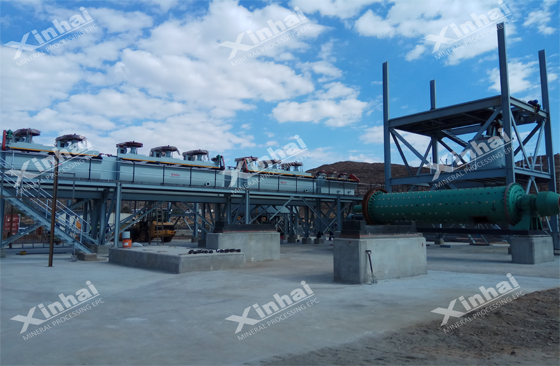
From Concentrate to Market: The Next Steps
Dry lithium concentrate is not battery-grade lithium metal yet. It is an intermediate product which is further processed with chemicals in conversion plants. There are different alternate chemical routes (e.g., sulfuric acid leaching followed by precipitation) employed in conversion plants to produce battery-grade lithium chemicals, e.g., lithium carbonate (Li2CO3) and lithium hydroxide (LiOH⋅H2O). These lithium chemicals are further used to make lithium-ion batteries for electric vehicles, consumer products, and energy storage systems, eventually reaching the market and driving our present world.
An understanding of the subtleties of hard rock lithium processing provides keen insight into the importance and complexity of this crucial stage of the lithium supply chain. As the world transitions towards an increasingly electrified future, effective and optimised hard rock lithium processing will be a cornerstone of the global energy system.
Gold Heap Leaching Summery
Gold heap leaching is a super common way to get gold out of low - grade ores. Let's dig into this method, covering everything from how it works, what ores are good for it, the whole process flow, how to recover the gold, what affects the operation, environmental stuff, and what might happen in the future.... [more]
No Next
Related Article
- What are the Technologies for Lithium Production
- Gold Heap Leaching Summery
- Global Mining Industry Analysis: Trends, Challenges, and Opportunities in 2025
- Phosphate Ore Processing and Beneficiation Plant Design: A Comprehensive Engineering Approach
- Titanium Ore Beneficiation: Navigating Global Supply Shifts with Advanced Processing Solutions
- Lithium Ore Processing Methods: Efficient Extraction Techniques for Battery-Grade Lithium
- Improving Graphite Ore Processing for Efficiency and Purification
- Chrome/Chromite mining company in South Africa
- Efficient Chrome Ore Gravity Processing Plants: Cost-Effective Solutions for Mineral Recovery
- What machines are used in lithium processing?
Mineral Processing EPC
Solutions
CONTACT US
- Tel: 0086 15901320633
- Fax: 0086 10 59621207
- Email: mhxu@xinhaimining.net
© 2017 Shandong Xinhai Mining Technology & Equipment Inc. Technical Support: Beijing Xinhulian Technology Co., Ltd.
Factory Address: No. 188, Xinhai Street, Fushan high-tech industrial development district, Yantai, Shandong, China


